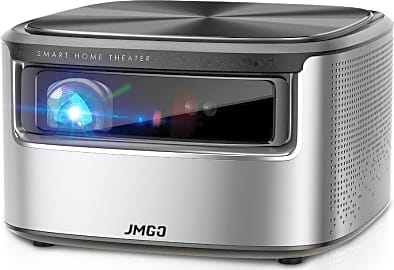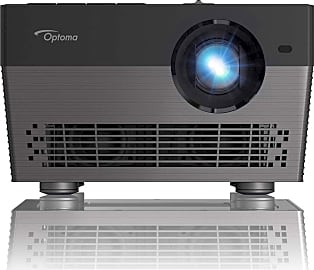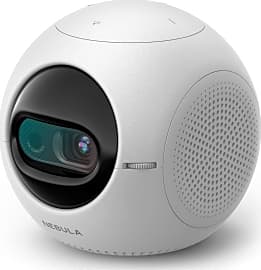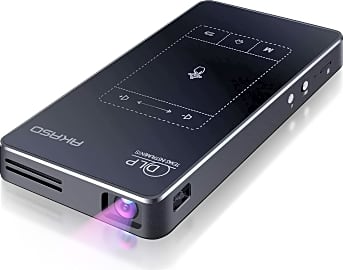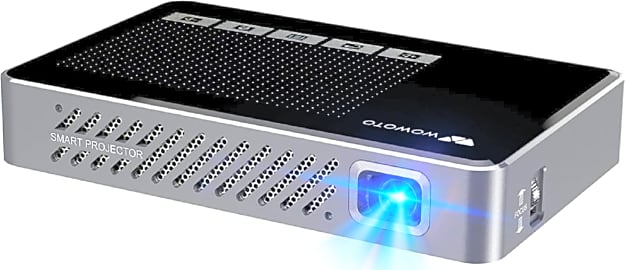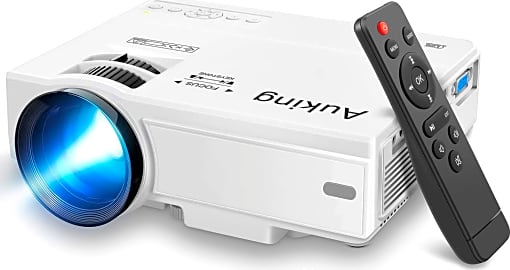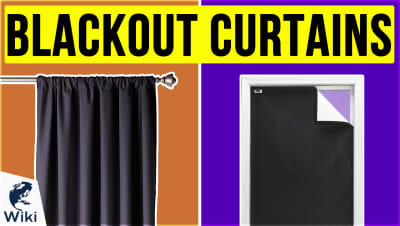The 9 Best Android Projectors

This wiki has been updated 33 times since it was first published in December of 2016. While just about every new TV comes with various smart features, most projectors still lack helpful software for streaming media and displaying files from external sources. Outfitted with Google's extremely popular Android operating system, these options can help streamline movie night, gaming sessions, and business presentations, using either the official or open-source platform. When users buy our independently chosen editorial choices, we may earn commissions to help fund the Wiki.
Editor's Notes
November 03, 2020:
With a fairly high degree of turnover, we consolidated the trio of Anker options on our last ranking to their most recent offering, the Anker Nebula Astro Mini, which has been upgraded to be 35-percent brighter than the company's previous models, even if that only brings it in at a somewhat paltry 100 lumens. It's also a great choice for parents who are worried about their kids getting too close to a bright bulb and damaging their eyes, as it has a safeguard against injury that will cut off the bulb if a sensor located on the front of the unit detects movement within 60 cm.
Exactly where you intend to place your projector will tell you a lot about the model you need, as well. Short throw options like the Vava 4K LT002 and the Philips Screeneo U3 are among our favorites for their space-saving design. But if you're planning on doing away with the TV stand altogether for space concerns, you might want to consider the JMGO N7 Native, which boasts one of the widest keystone correction ranges out there.
June 20, 2019:
First of all, one important point to make is that Android and Android TV are not the same. Android TV is specifically developed for media players and is more full-featured and pre-developed, while set-top boxes and media players running standard Android are using the UASP, or Open-Source Android Project, which is far more customizable but not quite as powerful, although it doesn't require quite as advanced of hardware components. So far, Anker's newest projector, the Nebula Capsule II, is one of the very few available with the actual Android TV OS.
But there's no reason that the open-source version can't provide a great experience when done well. Xiaomi has done a good job of implementing their own rendition of Android called MiUI TV, and it's available on their high-end projector with a laser-driven, 1080p output. It's one of the few Full HD models with Android capabilities. The Optoma is actually a native 4K device, but as of its launch, the proprietary Optoma Marketplace app store left much to be desired. Of course, because it's running on such a common platform, it may receive some updates. Either way, it's one of the very rare smart 4K projectors.
We mentioned Anker before, and there's a very good reason that Anker has dominated the top of our list. They make exceptional products in many categories, and projectors are no exception. The Mars 2 is somewhat high-end, the Capsule is highly portable, and the Capsule 2 is essentially a mix between the two. You can't really go wrong with selecting the Anker device that fits your price range. LG's CineBeam is another high-quality choice from a reliable manufacturer. And if you want to go even cheaper, you have a couple great options with the Laser Beam Pro and Wowoto.
Projection And Streaming In One Package
Not only will you have one less streaming box cluttering up your TV stand, you’ll also have fewer wires running from any boxes to your projector.
There’s nothing quite like seeing your favorite films projected on the big screen. It can be one of the most thrilling, hilarious, and expensive endeavors of your entertainment life. That last part is a real knife to the heart, isn’t it? When I was still a kid, we used to get into the movies for a song, and the ticket was good for however many showings you wanted to see that day. Concessions were even cheaper.
Today’s ticket prices a certainly higher for an adult, and that’s if you eschew the IMAX and 3-D showings made available with the big tent-pole blockbusters. When I was six, that would have gotten me a ticket, a soda, some popcorn, and a box of Whoppers (the thinking man’s malt ball). I probably would have gone home with change in my pocket.
The high cost of the movie-going experience is just one of the many reasons to invest in a high-quality projector. You’ll also find that you can breathe new life into your favorite sports broadcasts and primetime or streaming television through a medium once reserved for the cinema. Gaming never felt so immersive, either. By picking up your own 2-liter of Coke and investing in a decent popcorn maker, you can really round out the experience.
Of course, these are just things you can do with any good projector. Why get an Android projector? Well, let’s start by really identifying what that means. You probably have encountered some form of modern streaming box in recent years. The Roku, Amazon Fire, and Apple TV are the big competitors whose hardware may ring a bell. It’s also possible that you access your streaming services through a gaming console like the Xbox One or Playstation 4. An Android projector has a similar platform to all of these built-in, so you can download all the apps you use most for your streaming activities (Netflix, Hulu, etc.) and run them directly from inside the projector.
The most obvious benefit to having your streaming apps live inside your projector is the amount of space you stand to save. Not only will you have one less streaming box cluttering up your TV stand, you’ll also have fewer wires running from any boxes to your projector. Of course, if you’re using a projector at all, then that TV stand will very noticeably lack a television, as well.
Key Features Of Android Projectors
Likely the first thing you’ll have to decide when perusing the available Android projectors on the market is whether or not you want yours to be portable. A carefully designed projection space can make a huge difference in the quality of your experience, and it might not be worth your while to try to take that experience out on the road.
That will free them up to find ways of increasing contrast ratio, brightness, and bulb life.
Portability is a magnificent thing with these projectors, however. Since many can seamlessly connect with your smartphones, they can take the YouTube viewing party away from the cramped screen in your hands and focus it on the wall in front of you. They can also add a great feature to a night out camping, as long as you get a model with some kind of battery life, or at least the ability to run off the DC power in your vehicle.
With portability, however, almost always comes a reduction in picture quality. If a manufacturer makes a projector to live only in one place, they can spend less time and resources designing and developing more rugged housings and more compact ways of laying out their projectors’ interior components. That will free them up to find ways of increasing contrast ratio, brightness, and bulb life.
Those three key features — contrast, brightness, and bulb life — are among the most important considerations to take into account when evaluating your potential purchase. Projection in a small space can give off a lot of ambient light, and any other sources, from the light of your smartphone to a little lamp in the room, will decrease the quality of your projected image. The more contrast and brightness your unit can muster, the more impervious it will be to external light sources. After those features, available degrees of keystone correction, mounting options, and remote design are worth considering.
Getting The Most Out Of Your Android Projector
In order to have the best experience possible with your new Android projector, there are a few things you can do to fine-tune your space. You may have an image of an old-fashioned projector screen in your head — the kind that sits on an easel in front of a classroom —, but that’s not the best way to go these days. Projection screens are still your best option for image quality, of course, but there’s another possibility out there.
To get even more out of your projector, it’d be wise to invest in a high-quality audio system.
I’m talking about paint. Several companies make a special projection paint that operates much the same way that a projection screen would, reflecting back the most pertinent light ranges while absorbing those that could increase ambience and decrease your image quality.
Once you get an idea of where you want your projector set up, you can shine its light on the wall and trace the outline of the projected image with a straight edge. From there, paint as large of a black outline as you feel comfortable on the outside of this measurement. This outline will help create more contrast in the immediate area of the screen. Then, carefully fill in the outline with projector paint, and you’ve got a permanent screen setup.
To get even more out of your projector, it’d be wise to invest in a high-quality audio system. This can be a simple Bluetooth speaker that’ll boost the typically meager output these projectors offer, or it can be a full-blown home theater surround system that will take you all the way inside your favorite movies.
Finally, if you’re a daytime movie lover, or if you have an obnoxious amount of light coming in through your windows from streetlights or advertisements, consider a good set of blackout curtains. These will keep all that unwanted ambient light out of your space, maximizing your picture quality.


